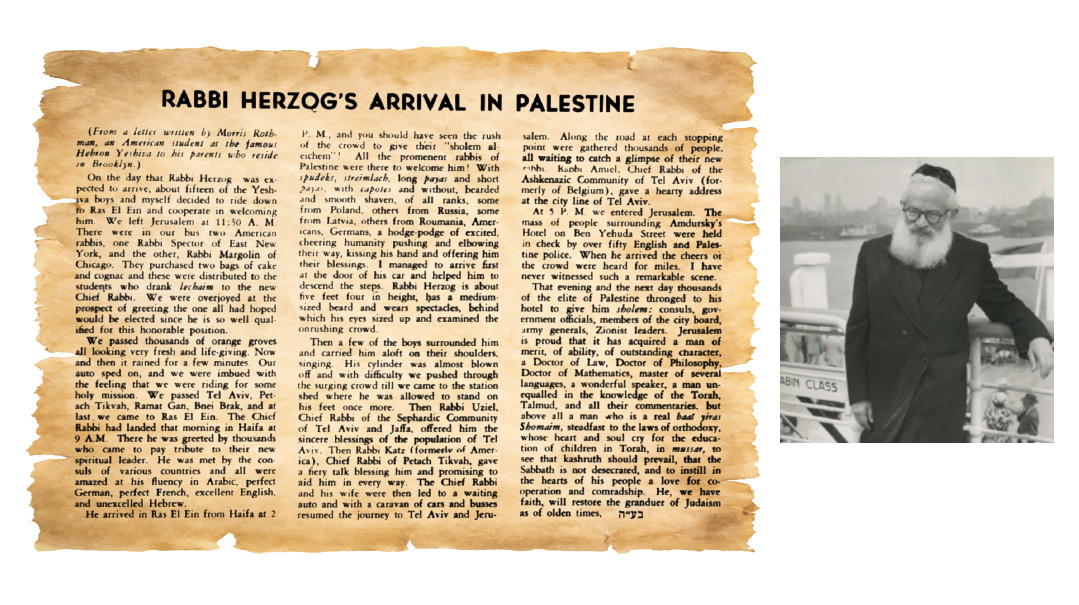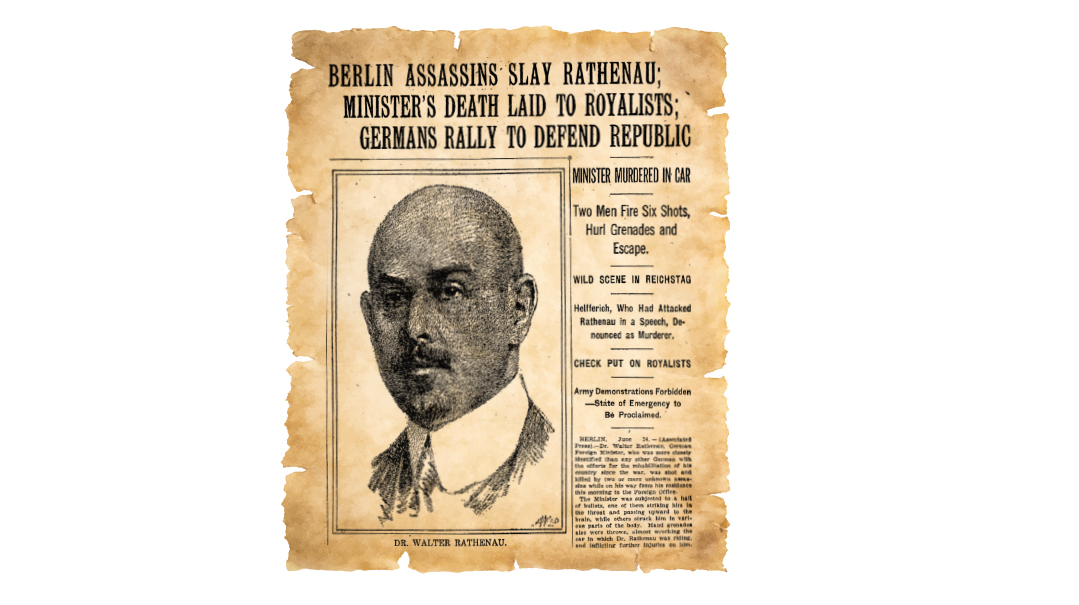They Called Him Reb Shmuel
| October 24, 2023His experiences on this journey so impressed him that he committed himself to religious observance

Title: They Called Him Reb Shmuel
Location: Vilna, Lithuania
Document: Samuel Schmidt Collection
Time: Spring 1940
Only those gifted with profound Jewish feeling can grasp the greatness and vibrancy of the spiritual treasures generated here and stored up for the coming generations. This is the most precious treasure and motivating force for all those laboring on behalf of authentic Judaism, including those currently distant from its eternal sources.… The yeshivos constitute an invulnerable island within Jewish society, which has suffered such grave shocks in this war.
—Dr. Samuel Schmidt, report for the Vaad Hatzalah on the state of refugee yeshivos in Lithuania, Spring 1940
Samuel Schmidt was born in Kovno in 1883 and immigrated with his family to the United States in 1896, settling in Boston. Following his graduation from MIT with a degree in engineering, he joined international relief efforts for his people when he was dispatched to the Holy Land by the Joint Distribution Committee’s Zionist Medical Unit for Palestine and assigned to deal with issues of sanitation, cholera, and malaria during World War I. In the early 1920s, he went to Poland as a representative for the Joint, to oversee medical relief efforts after the devastation of the First World War.
In 1926, having settled by this time in Cincinnati, he established a local Jewish newspaper called Every Friday, which he edited continuously until his passing almost four decades later. He rose to communal prominence with leadership positions in Bnai Brith, the American Jewish Congress, the Jewish National Fund, and the Poalei Zion faction of the Zionist movement. He held a traditional level of observance and was well known in the wider Jewish community, including to the titular leader of Cincinnati orthodoxy, Rav Eliezer Silver.
When World War II broke out in September 1939 and the Red Army occupied eastern Poland, the Soviet Union decided to return the Vilna region to independent Lithuania. When news of Vilna’s transfer from war-torn, Soviet-occupied Poland to independent and neutral Lithuania was publicized in October, it presented an incredible opportunity for Polish Jewish refugees. Among those who availed themselves of this venue of escape were the majority of the Lithuanian-style yeshivos in Soviet-occupied eastern Poland, heeding the call of the venerable leader of the Torah world, Rav Chaim Ozer Grodzenski, to escape the clutches of the anti-religious Communists.
When thousands of refugee yeshivah students and staff converged in Vilna, a humanitarian crisis ensued. In response, the Agudath Harabbonim in the United States established a new organization in November 1939 to assist the refugee yeshivos. Initially known as the Emergency Committee for War-Torn Yeshivos, it would later change its name to Vaad Hatzalah.
An editorial penned by Schmidt in Every Friday regarding the precarious situation of the refugee yeshivos in Vilna caught the attention of Rav Eliezer Silver, and he approached Schmidt with a proposal. Would he be willing to embark on a fact-finding mission to Lithuania for the newly established rescue committee, to ascertain the specific needs of the yeshivos and to distribute the initial funds? Samuel Schmidt agreed, and at the end of February 1940, he commenced a three-month visit to Lithuania. His experiences on this journey so impressed him that he committed himself to religious observance.
One of his first visits was to Rav Chaim Ozer Grodzenski. As the head of the Vaad Hayeshivos, Rav Chaim Ozer shouldered the responsibility for the entire yeshivah community, and continued in this role despite the stomach cancer that would claim his life that summer. When Samuel Schmidt described the purpose of his mission, Rav Chaim Ozer asked if he could refer to him as Reb Shmuel. The not-yet-observant Schmidt was a bit flustered by the request, but Rav Chaim Ozer persisted. “You voluntarily left the comfort of your home in America and endangered yourself, just to see to our welfare. For someone like that, no title can do justice.”
Reb Shmuel got to work and spent the next three months visiting the various yeshivos in their temporary dwellings, determining their needs and being impressed by their dedication to Torah study despite the spartan conditions. Schmidt’s visit and subsequent report formed the basis of the Vaad Hatzalah’s activities during its early years. The dire financial straits of the refugee yeshivah students, along with the general precariousness of their position, would ultimately guide the Vaad’s subsequent fundraising and lobbying efforts on their behalf.
An Appreciation
As Reb Shmuel neared the completion of his mission in April 1940, Rav Chaim Ozer wrote him a letter of appreciation: “You came on behalf of the Agudath Harabbonim in order to visit the refugee yeshivos. Upon visiting the yeshivos, you now appreciate their value, and that it is within this fortress of Yiddishkeit that our Torah is to be found.… Now that you’re returning home, I want to express my deep appreciation for everything you’ve done with great mesirus nefesh. Please provide a detailed report to all of the activists back home, in order to galvanize the rescue efforts. Please convey my thanks to your honorable wife, that she allowed you to undertake this trip.”
Follow-Up Visit
The guns fell silent in Europe on May 8, 1945, and in the beginning of July, Samuel Schmidt was once again on European soil to assist in postwar relief efforts. Meeting survivors and relief staff in France, Switzerland, and Germany, he spent the summer assisting in rehabilitative efforts in the Displaced Persons camp being established by the American military in Germany. He dispatched regular reports of what he witnessed and the stories he heard from survivors, which were published in his newspaper Early Friday. These formed some of the earliest firsthand reports of the horrors of the Holocaust.
For the full story of the refugees’ long journey from Lithuania through Japan to Shanghai, including the miraculous escape of the Mir Yeshivah, make sure to follow the ongoing series on the Jewish History Soundbites podcast with Yehuda Geberer entitled “The Great Shanghai Escape.”
(Originally featured in Mishpacha, Issue 983)
Oops! We could not locate your form.






